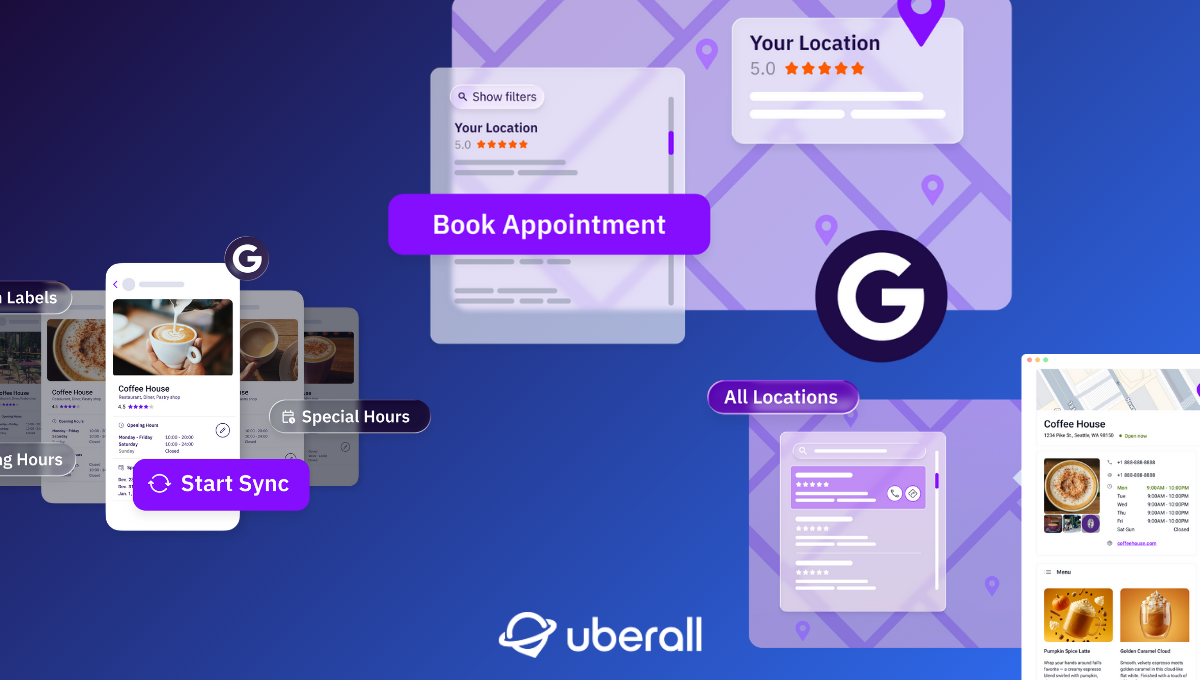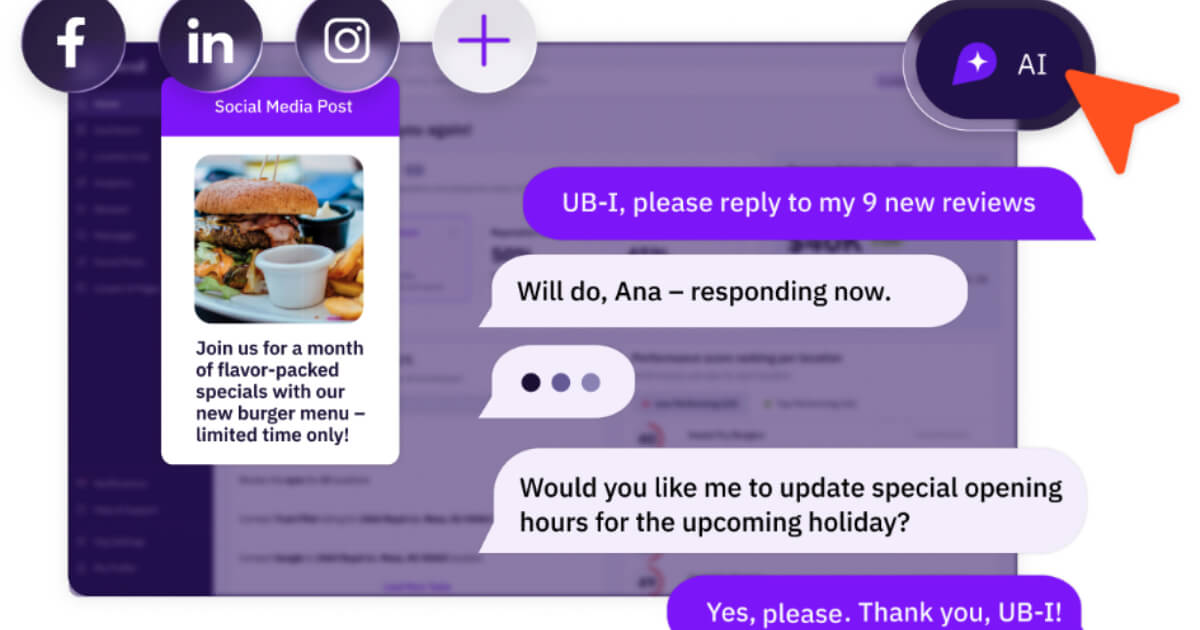
Reactive Marketing Tips for Multi-Location Brands
Discover reactive marketing tips for multi-location brands to boost engagement, authenticity, local SEO, and real-time customer connections.
The modern marketing landscape necessitates agile strategies.
Traditional marketing, with its predetermined schedules and static content, is often insufficient for multi-location brands. These businesses must proactively identify and seize opportunities, capitalize on trending topics, and engage with consumers when they are most receptive. This demand introduces the critical role of reactive marketing.
For multi-location brands aiming to enhance engagement, personalization, and brand authenticity, reactive marketing offers a powerful solution. It fosters stronger, more relevant connections with customers across all physical and digital touchpoints.
What Is Reactive Marketing?
Reactive marketing is a response-based approach designed to capture and retain audience attention in real-time or near real-time. Unlike proactive marketing, which relies on pre-planned campaigns, reactive marketing adapts to immediate market changes, customer feedback, or trending events as they unfold.
This strategy thrives on spontaneity and responsiveness, whether it involves addressing current events, leveraging viral trends, or responding to customer feedback. The most effective reactive marketing integrates these responses into core customer communication strategies across all business locations.
Newsjacking: A Key Reactive Technique
Newsjacking is a potent reactive marketing technique that involves leveraging trending news or events to generate attention for a brand’s content or messages. By inserting themselves into relevant conversations and utilizing media buzz, multi-location brands can increase visibility and engage with their audience across diverse markets simultaneously.
Benefits of Reactive Marketing for Multi-Location Brands
Reactive marketing enables brands to maintain relevance and top-of-mind status through immediacy. It can significantly increase the likelihood of capturing attention and driving immediate action, leading to improved visibility, higher conversions, and an amplified impact of other marketing initiatives.
Enhanced Authenticity and Transparency
Reactive marketing cultivates authenticity by showcasing a brand’s agility and responsiveness to current trends or feedback. This approach builds stronger connections with consumers across all locations, demonstrating engagement and care, which ultimately sharpens a brand’s competitive edge.
Synergy with Local SEO
Reactive marketing and multi-location marketing strategies are complementary. By integrating these approaches, multi-location businesses can create hyperlocalized content that resonates with target audiences in real-time.
This drives local engagement and enhances search visibility, making it a key component of effective location-specific optimization strategies. For instance, many local searches lead to phone calls, in-person visits, or service appointments. Additionally, businesses prominently featured in the local map pack can receive significantly more traffic than those outside it.
Proactive vs. Reactive Marketing
Both proactive and reactive marketing are essential components of a comprehensive strategy for multi-location brands. Understanding their distinct characteristics helps in deploying each effectively.
Choosing Your Approach
- Choose proactive marketing if … you are establishing core brand messages, planning seasonal promotions, or launching new products with a fixed timeline.
- Choose reactive marketing if … you aim to capitalize on breaking news, engage with viral social trends, or respond directly to customer feedback or localized events.
- Optimal strategy combines both if … you are a multi-location brand seeking both sustained growth and immediate, localized relevance across diverse markets.
How to Execute Reactive Marketing
Effective reactive marketing relies on advanced data analytics, automation, enhanced customer insights, and AI-powered tools. However, resource constraints, such as small teams, limited budgets, or complex approval processes, can hinder even the most meticulously planned marketing initiatives.
1. Develop Your Strategic Foundation
Multi-location marketers must identify their target customers, understand the information that triggers brand involvement, prioritize appropriate platforms, and establish clear objectives for reactive marketing efforts. Consider these scenarios:
- Are customers discussing major sporting events? Craft messages about watching games at your locations.
- Are they excited about seasonal changes? Showcase relevant products or services already available.
This approach creates an interactive loop where you listen, react by creating content, and respond to resulting feedback.
2. Establish Real-Time Monitoring Systems
Effective reactive marketing demands vigilant monitoring of current events and trends.
Implement a robust system for tracking news, social media, and industry trends across all your locations.
Uberall’s multi-location marketing software can aid in monitoring conversations and identifying opportunities for timely engagement, acting as a powerful local SEO management platform. Maintain close observation of both anticipated and unexpected events that present opportunities for your brand to participate in relevant discussions.
3. Create Engaging, Location-Specific Content
To fully leverage opportunities, understand the context and nuances of the events or trends you are capitalizing on.
Conduct thorough research to gain insights into audience interests, preferences, and expectations related to specific topics and locations. Craft content that aligns with the tone and sentiment of the moment while maintaining brand voice consistency. Utilize concise messaging and engaging visuals — whether a witty tweet, a captivating video, or an interactive campaign.
4. Scale Local Engagement Across Locations
A significant value of reactive marketing lies in fostering customer engagement — making customers feel seen, valued, and connected across all your business locations. Build genuine connections by demonstrating your business’ accessibility and transparency. To optimize your reactive marketing foundation:
- Complete your Google Business Profile and all other local listings to provide customers with necessary details to find each location.
- Utilize advanced analytics from your multi-location marketing platform to gain clearer insights into customer behavior across all locations.
- Implement comprehensive multi-location review management systems to monitor and respond to feedback quickly.
- Also, effective local social media management is crucial for staying connected with local communities and responding to trends directly where conversations happen.
5. Balance Risks and Resources
Reactive marketing inherently carries risks; it requires trust in your team and swift responses if a campaign backfires in real-time.
Best practices include:
- Focus on generally uncontroversial subjects to mitigate potential backlash.
- Avoid basing messages on overtly divisive topics, such as politics.
- Remain nimble; timing is crucial in reactive campaigns.
- Maintain location-specific optimization strategies to ensure relevance across markets.
Risks and Caveats
- Reputational damage: Misinterpreting a trend or responding inappropriately can lead to negative public perception.
- Resource intensity: Constant monitoring and rapid content creation demand significant time and team resources.
- Inconsistency risk: Without careful oversight, reactive campaigns across multiple locations may lead to inconsistent brand messaging.
- Short-term focus: While effective for immediate engagement, reactive marketing should complement, not replace, long-term strategic planning.
- Potential for backlash: Even well-intentioned reactive content can be perceived negatively if not executed with cultural sensitivity and awareness.
Your Strategy as a Multi-Location Brand
Reactive marketing signifies a fundamental shift in how multi-location brands connect with customers across their diverse markets.
By embracing immediacy, authenticity, and responsiveness, businesses can cultivate stronger relationships while driving engagement and conversions. The key lies in establishing robust monitoring systems, creating engaging location-specific content, leveraging technology like multi-location marketing software, and implementing robust multi-location review management to efficiently scale efforts across all locations.
Ready to transform your multi-location marketing strategy? Explore Uberall’s comprehensive platform to see how reactive marketing can drive growth for your business.
Ready to Transform Your Business?
Connect with our partnership team to learn how Uberall can help you achieve similar results. Get a personalized consultation and discover the opportunities waiting for your business.
Resources











